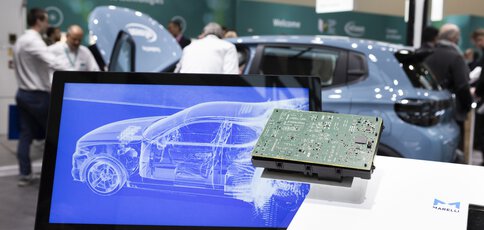Focus topicInnovative power electronics are seen as a key to decarbonizing and digitizing society. Discover how state-of-the-art semiconductor technologies are increasing energy efficiency in both industrial and private applications.

Experience the world’s largest trade fair for electronics manufacturing from November 18 to 21, 2025. Discover innovations across the entire value chain — and witness firsthand the discussions shaping the future.
productronica consistently focuses on the most important topics in electronics manufacturing. This year, in collaboration with our Advisory Board and the association VDMA, we have analyzed what’s driving the industry. The result: the focus topics of productronica 2025.
Subscribe to our free productronica visitor information. You will receive comprehensive information about your visit to the fair, the exhibitors and our supporting program.